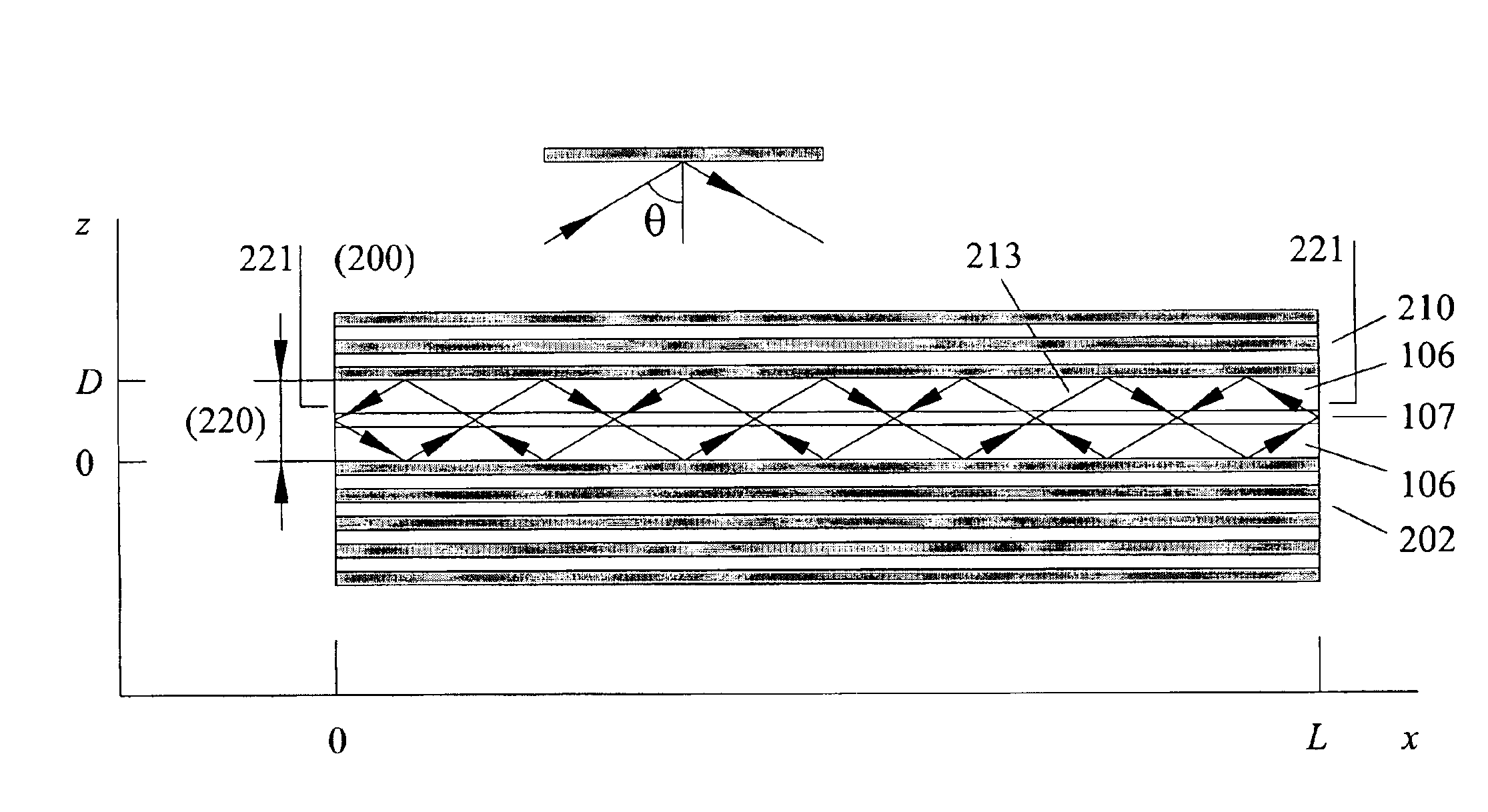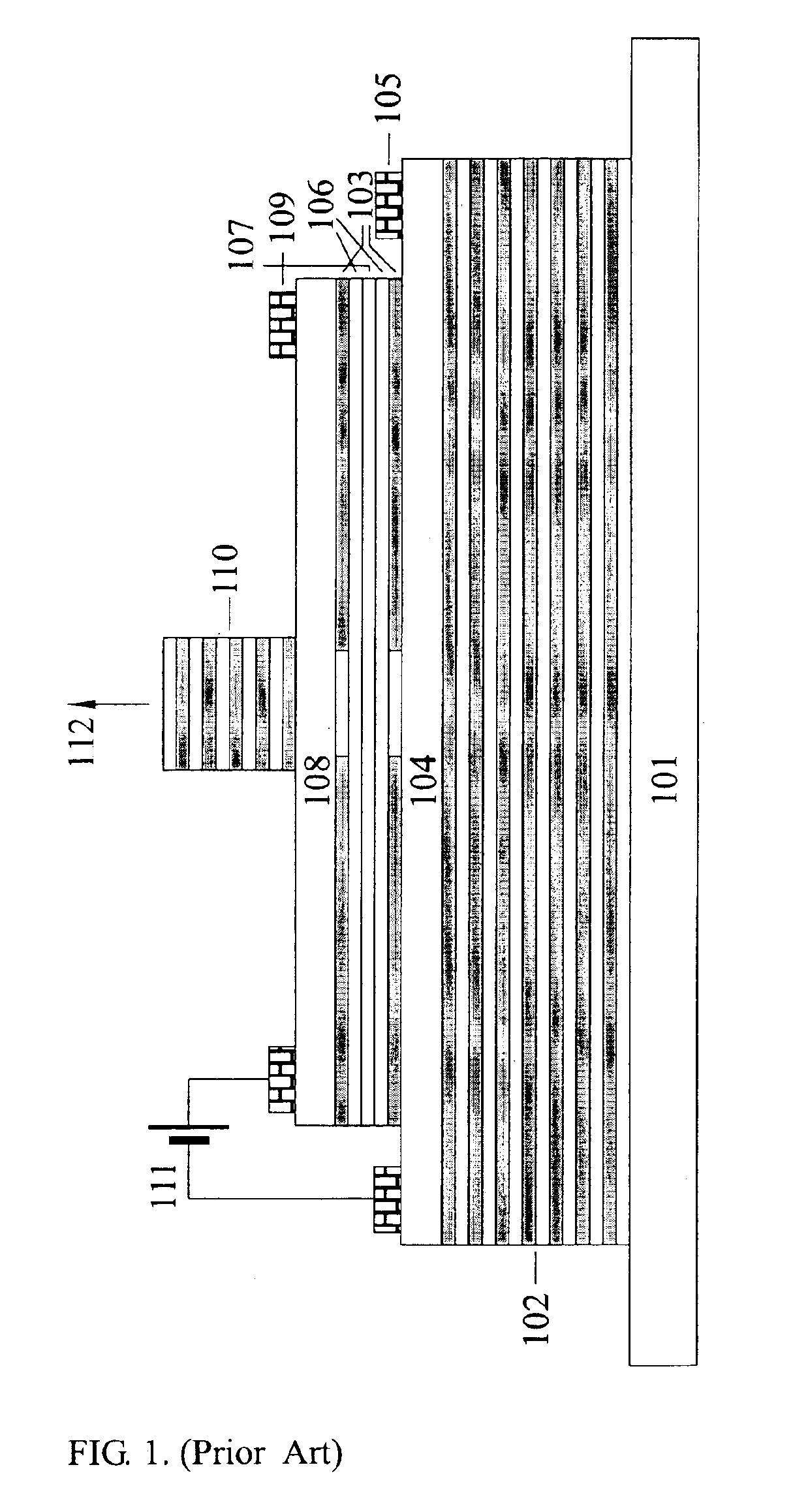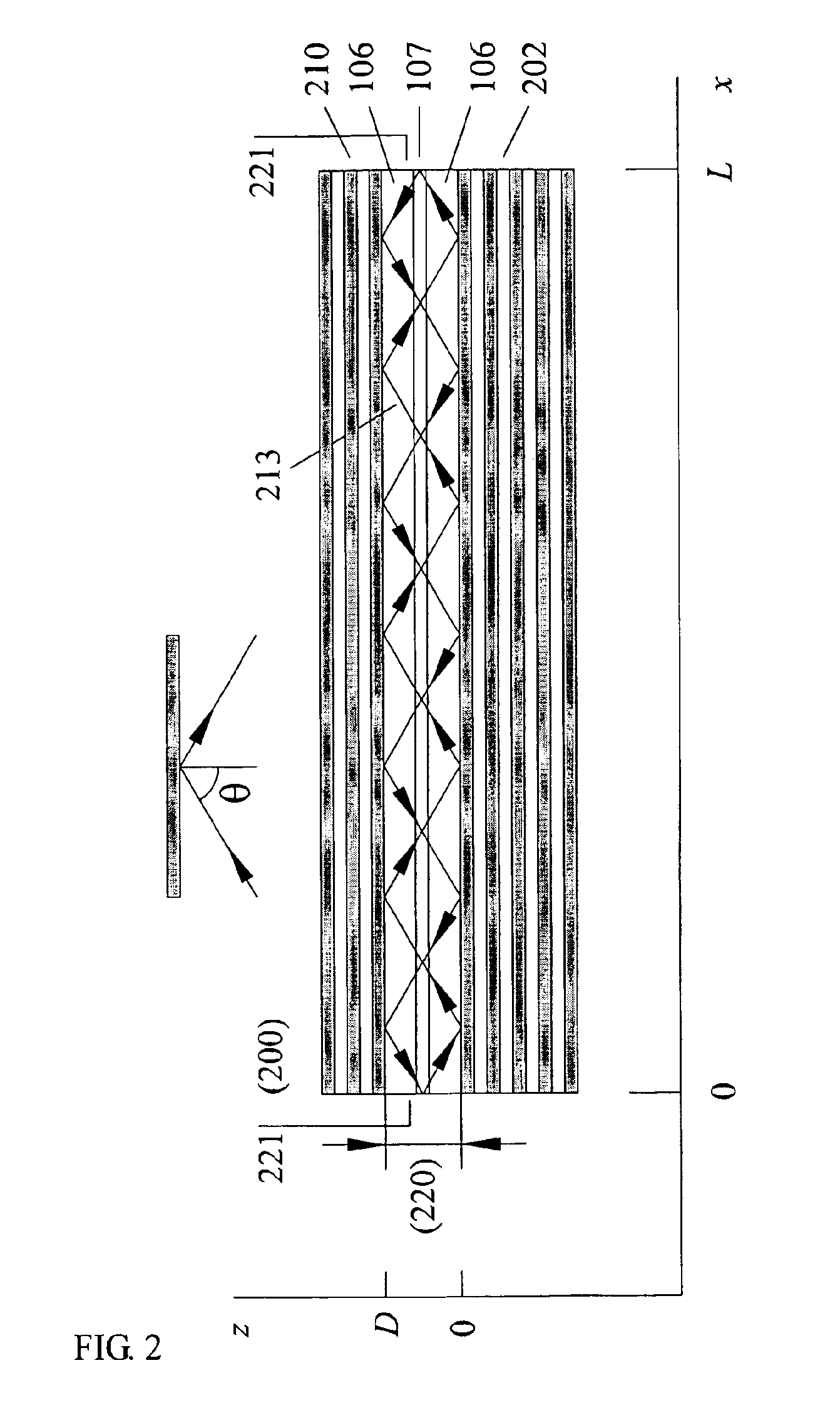Tilted cavity semiconductor laser (TCSL) and method of making same
a semiconductor laser and tilting cavity technology, applied in the direction of lasers, laser optical resonator construction, laser construction details, etc., can solve the problem of unsatisfactory temperature dependence of the wavelength of emitted light, approach that requires very complicated technological steps, and drastically reduces the number of possible materials for bragg mirrors
- Summary
- Abstract
- Description
- Claims
- Application Information
AI Technical Summary
Benefits of technology
Problems solved by technology
Method used
Image
Examples
Embodiment Construction
[0042]A prior art surface emitting laser, or more specifically, a vertical cavity surface emitting laser (VCSEL), is shown in FIG. 1. In a surface emitting laser, an active region is generally put into a cavity. An undoped or weakly doped active region is surrounded by n- and p-contact layers, which are generally surrounded by mirrors. The structure is grown epitaxially on a substrate (10). Bragg reflectors are used for the bottom mirror (102). The rest of the VCSEL is an active element.
[0043]A current aperture (13) separates an n-doped current spreading layer (14) having a first metal contact (15), from the weakly doped confinement layers (16) surrounding the active region (17). A second current aperture (13) separates the weakly doped confinement layer (16) from a p-doped current spreading layer (18) having a second metal contact (19). The n-doped current spreading layer (14) sits directly on top of the bottom mirror (102). The active element operates under forward bias (11). The ...
PUM
| Property | Measurement | Unit |
|---|---|---|
| reflectivity | aaaaa | aaaaa |
| angle | aaaaa | aaaaa |
| wavelength | aaaaa | aaaaa |
Abstract
Description
Claims
Application Information
 Login to View More
Login to View More - R&D
- Intellectual Property
- Life Sciences
- Materials
- Tech Scout
- Unparalleled Data Quality
- Higher Quality Content
- 60% Fewer Hallucinations
Browse by: Latest US Patents, China's latest patents, Technical Efficacy Thesaurus, Application Domain, Technology Topic, Popular Technical Reports.
© 2025 PatSnap. All rights reserved.Legal|Privacy policy|Modern Slavery Act Transparency Statement|Sitemap|About US| Contact US: help@patsnap.com



